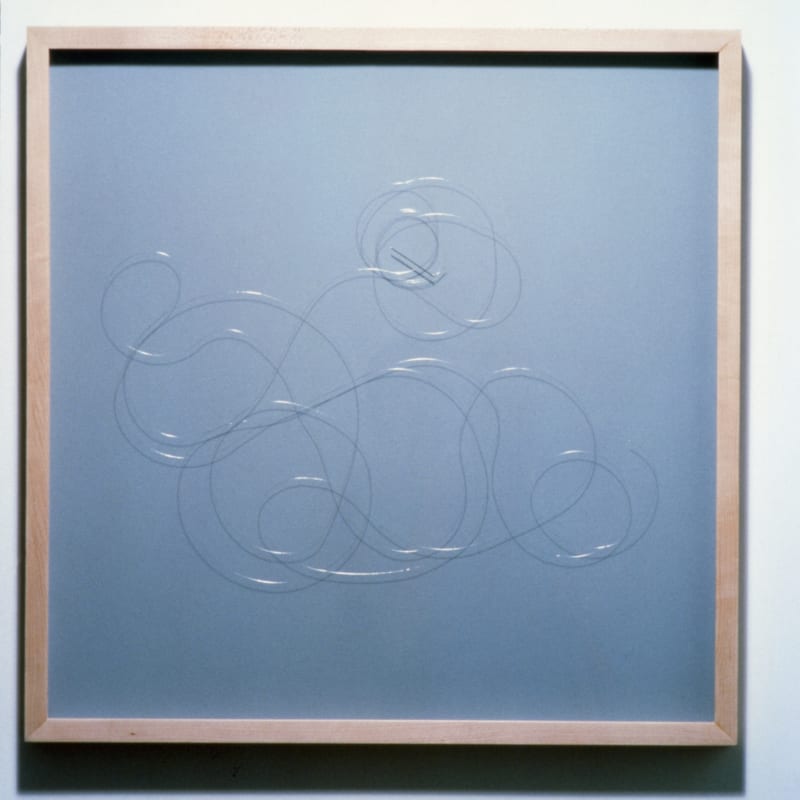Appliance of Science
We are surrounded by books, television programmes, lectures cajoling us towards a better understanding of science as we reach the end of the 20th century. While science continues to reveal seemingly miraculous worlds which, it is argued, should inspire rather than undermine the poetic imagination, the traditional opposition between science and the arts continues. The science writer, Richard Dawkins, uses Unweaving the Rainbow as the title for his latest book – the title is taken from Keats who believed that Newton had destroyed all the poetry of the rainbow by reducing it to the prismatic colours.
Arguably, some scientific moments can’t be truly understood by the human brain (they are beyond the limits of our reason) and poetry and art provide a metaphor by which to understand the wonder of science. The exhibition aims to show how artists use some of the strategies or devices usually associated with science – or a scientific moment itself – to make works which address our understanding or perception of the sublime.
All of Tacita Dean’s films have an element of this. Her preoccupation with the sea, with time and with healing allude to an unknowable universe and our presence within it. The Structure of Ice (1997) is ostensibly a film about the way in which molecules travel and bond together to form ice, and like all the work in the show it is concerned with a poetic rather than a physical truth. Dean’s film focuses on the workings of a 1950s model (one of the first to illustrate 3-dimensional thinking) and the narration is taken in part from pre-Socratean theory. It elucidates an ancient theory of atoms and sets up a paradigm for the show.
Heidi Specker’s photographic series Particle Theory takes its name from Isaac Newton’s pioneering scientific theory that light travels as a stream of small particles and that colour is dependent on the density of particles. It sets up an associative framework for her series of microscopic and macroscopic views of architecture and plays on the fact that Specker’s digitally synthesized iris prints are determined by the saturation and distribution of computer pixels. However, it also plays on the fact that each architectural detail is a particle of a much larger building. Abstracted and magnified, Specker’s Particles question the perception of concrete reality that both photography and architecture are usually associated with.
Cornelia Parker is known for her spectacular detonation of monuments, ideas, assumptions and clichés which expands the field of possibility on which the imagination might play. Her Shirt Starched with Chalk from Beachy Head explores how it might be possible to wear a famous (and famously crumbling) part of English geography and is Parker’s personal reaction to the title of the exhibition. The poetic and physical transformation that it suggests is echoed in Three Fathoms in a Thimble in which a silver thimble is drawn into wire and threaded through a needle. Her photograms, Match and Glass, record the life of a match held over a glass and comment on the classic relationship between glass and light in science.
Eran Schaerf makes installations from seemingly unremarkable objects – but put together they form an intriguing spectacle in which a world of secret affinities takes place. His installations can function like a scientific chain reaction – certain items brought together under certain circumstances come together to form a completely different entity. His installation Tailor & Son, Lengthening, Shortening, Roses (1991) was one of the first installations of this kind that he made . It consists of seven different parts, each incorporating clothing, drawings, objects, writing, photograph;. each item adding a further association or possible translation. It is complemented in the exhibition by Club Wear 1 (1997), which plays of the linguistic possibilities of the word club and draws an analogy to writing and the different languages (and meanings) that it can entail.
In previous works Elizabeth Wright has challenged us by using a process of transformation – she has enlarged and reduced the proportions of objects that we take for granted. In Stolen Bicycle Enlarged to 165%, (1998), a single, buckled bicycle wheel chained to a lamppost, she presented us with an index of something that was no longer present. A new series of floor drawings which replicate actual skidmarks and tyre tracks provided by the Transport Research Laboratory, build on the same idea giving us the cryptic impression of an unseen event. Doughnut (360° skid) suggests the presence of a motorcycle which has spun around the impossibly confined space of the lower gallery at great speed and made off through the archway.


